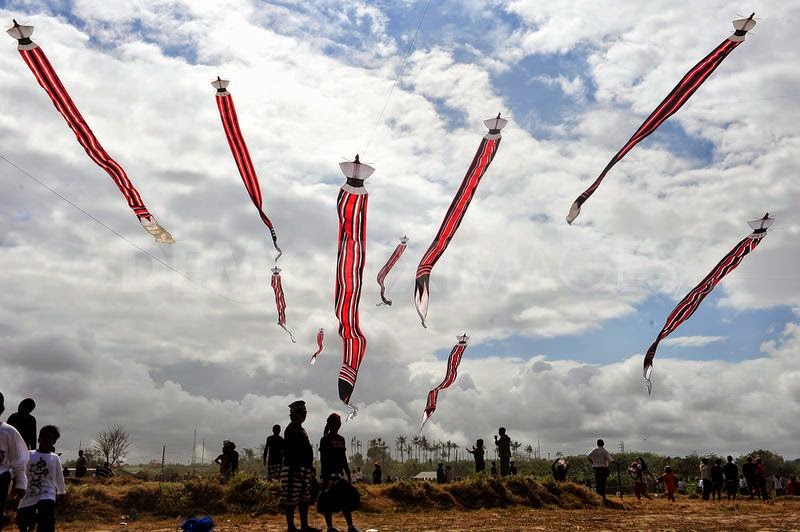In Bali, kites are more than just playful objects in the sky—they represent a deep cultural and spiritual tradition. For the Balinese people, kites are a beautiful blend of art, heritage, and harmony with nature, carrying profound symbolic meaning.
Each year, the island comes alive with vibrant colors and graceful movements during the Bali kite season, which typically runs from April to August. During this period, consistent ocean breezes make the skies of Bali perfect for flying kites, creating a spectacular scene that’s both artistic and meaningful.
The tradition of kite flying in Bali is rooted in centuries of cultural expression, especially through the legend of Rare Angon, a story that weaves together mythology, nature, and the joy of childhood. As Bali welcomes this season, both locals and tourists gather to celebrate the island’s love for kites through colorful festivals and spirited competitions.
Unique Designs of Traditional Balinese Kites
Balinese kites are famous for their large sizes and intricate designs, often shaped like birds, dragons, or symbolic traditional forms. These kites are not just eye-catching—they are also designed to create sound. Many feature a “ngur” or resonator, which produces a humming noise that adds a mesmerizing audio element to the visual beauty.
More than just entertainment, kite flying in Bali is a sacred practice. It’s a way of honoring Dewa Bayu, the god of wind, and asking for balance in nature and a successful harvest. That’s why many kite events also involve offerings and rituals, connecting spiritual beliefs with everyday life.
Bali Kite Festival: A Celebration of Art and Culture
One of the most anticipated events during kite season is the Bali Kite Festival, a major celebration that draws both local and international participants. These large-scale festivals bring together communities, artists, and kite enthusiasts from around the world. The festival becomes a melting pot of culture, creativity, and friendly competition, uniting people through a shared passion.
Massive kites are launched into the air, each representing a community, with teams working together to design, build, and fly them. This blend of tradition and collaboration reflects the strong community spirit of Bali.
Rare Angon: The Myth Behind the Kites
The story of Rare Angon, which means “young shepherd” in Balinese, adds a mystical touch to the kite-flying tradition. According to legend, Rare Angon is a manifestation of Lord Shiva who descends to Earth after the harvest season, calling upon the wind through the sound of a flute. Children, especially shepherds, would use their free time after harvest to play kites—connecting joy, nature, and divine presence.
Even today, the spirit of Rare Angon lives on as both children and adults fly kites across Bali’s skies, remembering the joy of simpler times.
Popular Types of Balinese Kites
Some traditional Balinese kite types as cited by Detik, include:
- Bebean – Fish-shaped, symbolizing prosperity and harmony.
- Janggan – A majestic dragon-shaped kite with a long tail, often used in ceremonies.
- Pecukan – Leaf-shaped and challenging to fly, resembling falling leaves.
- Kuwir – Bird-shaped kites known for their agile movements.
- Celepuk – Owl-shaped, attracting attention at festivals with their unique design.
The Bali kite season is more than a visual spectacle—it’s a deep cultural experience. Kites in Bali symbolize joy, spirituality, and human connection with nature. Whether you’re exploring Bali for its festivals, art, or spirituality, witnessing a kite soaring through the Balinese sky is a magical moment not to be missed.
Source: detik.com, desasedang.badungkab.go.id
Photo Credit: balistarisland-indonesia.blogspot.com

